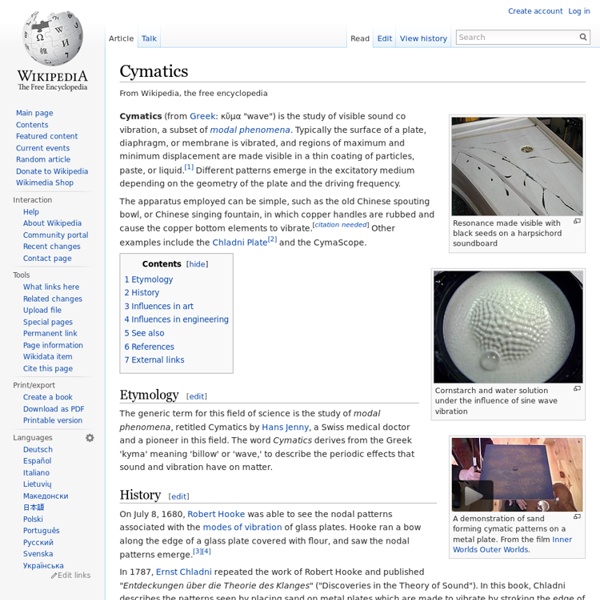Cymatics

Harmonograph
A harmonograph output A harmonograph is a mechanical apparatus that employs pendulums to create a geometric image. The drawings created typically are Lissajous curves, or related drawings of greater complexity. The devices, which began to appear in the mid-19th century and peaked in popularity in the 1890s, cannot be conclusively attributed to a single person, although Hugh Blackburn, a professor of mathematics at the University of Glasgow, is commonly believed to be the official inventor.[1] A simple, so-called "lateral" harmonograph uses two pendulums to control the movement of a pen relative to a drawing surface. More complex harmonographs incorporate three or more pendulums or linked pendulums together (for example hanging one pendulum off another), or involve rotary motion in which one or more pendulums is mounted on gimbals to allow movement in any direction. Computer-generated harmonograph figure[edit] A harmonograph creates its figures using the movements of damped pendulums.
Cymatics »
Related:
Related:



